Mohair tokari is a trendy hat for 2022. Its creator is a designer with Ukrainian roots Svetlana Takkori, the owner of the fashion house "Tak Ori", located in Italy. The fashionable headwear is popular due to its convenience, beauty and good heat-saving qualities.
Tokari, also called “Takori” or “Stocking”, in the classic version is made from mohair yarn.
Distinctive features of the Tokari hat
The Tokari mohair hat is a gentle and warm accessory for women of all ages. Svetlana Takkori, the author of the hat model of the same name, once said that she was inspired to create this winter wardrobe item by her own love for various types of hats.
The woman noted that she wears them all the time, regardless of the weather or season outside. Having devoted many years to studying clothing design and having worked for many years as a fashion designer in several fashion houses in Italy, she decided to create her own brand that would be available to everyone.
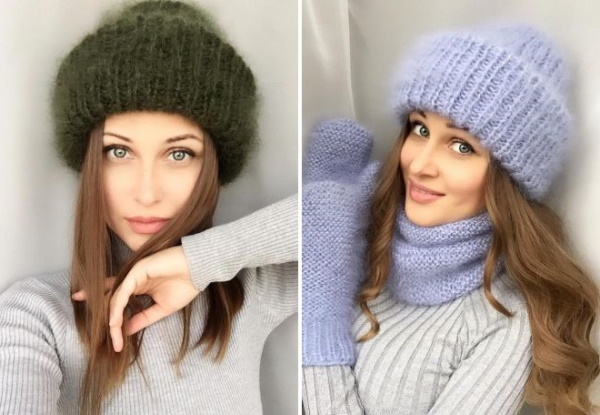
While creating the concept for the future range of the fashion line, she came to the conclusion that it would consist of knitted items: hats, scarves, shawls, gloves and coats.
The designer notes that he prefers quality to quantity of products, so he works on each item individually, selecting the best natural materials. Takkori produces the entire range in Italy, buying good Umbrian yarn for it.
Some fashion experts have criticized the branded hat, noting that it strongly resembles the warm headwear that was fashionable in the 70s of the last century.
But takori has several differences from its ancestor:
- A wide cuff is a must.
- Warm, voluminous or fluffy thread.
- Length.
- Softness.
- Knitting with one pattern.
- Versatility of the model.
The takori headdress differs from other stocking hats by its wide fold, which takes up most of the product. It can be either single or double. In some cases, fashionistas even resort to a third roll-up of the lower part of the hat.
The windproofness of the headdress is also achieved due to the turn-up. Also, several layers of warm material do not let in cold winter air and frost, which provides additional comfort in the cold season. The ears, forehead and back of the head are under the enhanced protection of the product made of natural fiber.
To create a stylish hat, use warm and voluminous yarn. The classic takori model is made only from mohair. If you have a warm but thin thread at hand, before starting work, fold it several times and only then start knitting.
What distinguishes a branded hat from other headwear is its length, which in the classic version is 45 cm and should not be shorter. Models with a multi-layer cuff can be longer.
Winter hats from Takkori are usually soft and pleasant to the touch. They do not leave red marks on the forehead after wearing the hat for a long time. Usually, such "marks" are left by products made of rough material, and the mark does not disappear immediately after removing the hat, but somewhere within 20-30 minutes, which causes additional discomfort.
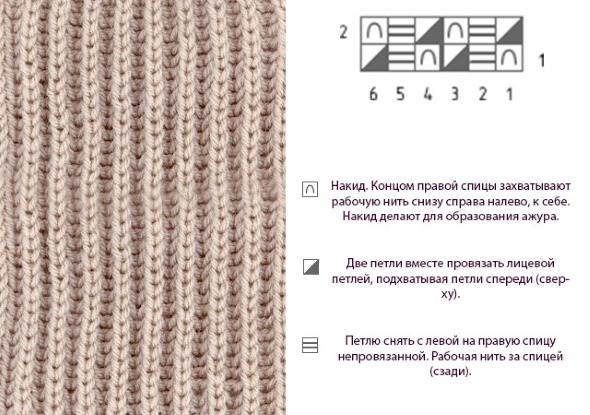
Classic takori is knitted only with English elastic. The pattern adds the necessary volume and tenderness to any image. In improved versions, adapted for a wide user, the stylish accessory is knitted with an elastic band with a step of 1 by 1 (if the yarn is voluminous) and 2 by 2 (in the case of thinner threads).
You can also combine elastic patterns and, for example, knit a multi-layered border with English stitch, and the main fabric with a regular elastic band or stocking stitch.
The takori has also gained popularity due to the versatility of its style. The hat looks equally good on both women and men. At the same time, the model has no age restrictions. It is knitted for children, teenagers and adults. People over 65 are not afraid to go out in takori.
Headwear from Svetlana Takkori suits people with different appearances. It emphasizes the advantages of the face and skillfully hides the flaws. In addition, takori adds a special charm and tenderness to the fair sex, which makes the image more attractive and romantic.

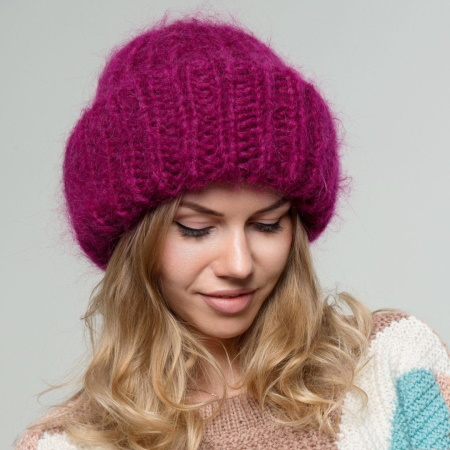 | 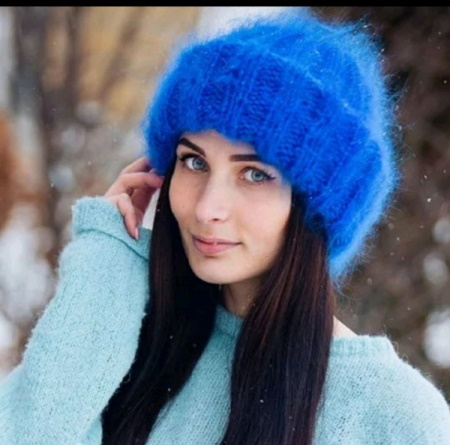 |
A warm mohair accessory that goes well with all clothing styles. The hat looks good under a leather jacket or a denim jacket with fur. The headdress will complement the image of those who love boho or ethnic style. It goes well with outerwear decorated with hand embroidery and traditional folk motifs.
Subtleties of working with mohair yarn when knitting a hat, selection of knitting needles
Mohair has long been considered one of the best yarns, and some experts call it "Diamond fiber." The homeland of this type of thread is Türkiye, or more precisely, its province of Angora.
The material is obtained from the wool of highland goats by combing. At the same time, it is impossible to find pure 100% mohair, since goat down is difficult to twist and process, so manufacturers add acrylic or sheep wool thread to it. The maximum content of diamond fiber in a skein cannot exceed 83%.
Initially, mohair was called angora, in honor of the region where rare ungulates were found that produced warm, light wool. But then the yarn was renamed, as Chinese breeders developed a variety of fluffy rabbits, the fluff of which was also called angora and began to be supplied to the market at a lower price.
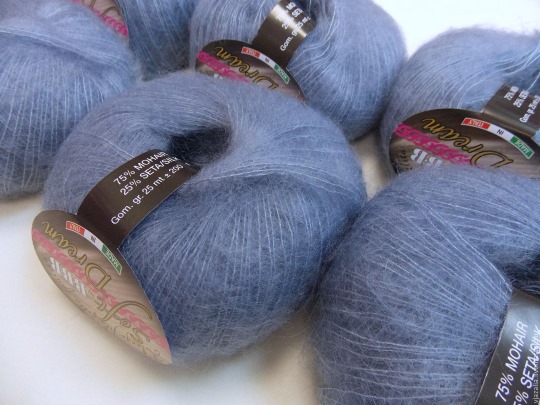
However, the thread was of inferior quality and did not have all the properties of the Turkish fiber. To avoid further confusion, the Turks renamed their material mohair and preserved its reputation.
The advantages of goat diamond fiber include:
- ease;
- softness;
- noble shine;
- ability to absorb moisture;
- maintaining body temperature;
- good ventilation;
- hypoallergenic;
- elasticity;
- fire resistance.
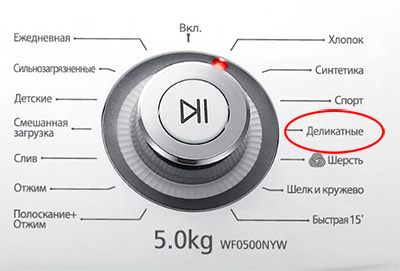 | 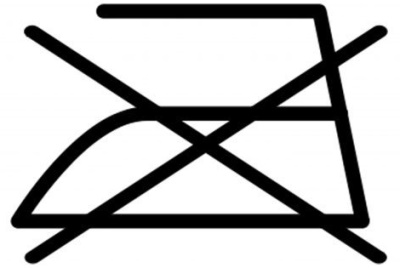 |
Mohair products are pleasant to the touch, almost weightless and soft. They absorb moisture well and do not allow the body to sweat. At the same time, a hat made of diamond fiber is comfortable both in winter and summer, since the good insulating qualities of the material do not allow the body to overheat, allowing it to breathe.
The yarn is suitable for allergy sufferers and people with hypersensitive skin. Mohair takori stretches well, shines and holds its shape. At the same time, the yarn is considered fire-resistant, since natural fibers begin to smolder when in contact with an open fire and go out on their own, without causing a high flame.
Despite all the positive qualities of the material, it also has several disadvantages. Among them are the high cost and the need for delicate care. Items made of diamond fiber should be washed in wool powder or shampoo, choosing a special mode in the washing machine. In this case, the product is placed in a laundry bag.
Mohair items cannot be ironed. It is recommended to steam them or dry them by laying them out on a cloth. You can also use dry cleaning services.
Special attention should be paid to skeins when purchasing. In order to choose the right diamond fiber, you need to smell the skein. If there is not even a barely perceptible chemical smell, then the material is natural. In addition, you can test the yarn for the presence of synthetic components by simply squeezing it in your hand.
The tighter the skein is, the more unnatural fibers it contains. Mohair thread is elastic and has increased slippage from knitting needles. It is both easy and difficult to work with. While it is easy to cast on and knit stitches, you need to constantly monitor them so that they do not slip off at the wrong moment.
Experienced needlewomen recommend that beginner knitters fold the thread in half when working with takori. This will make the brim of the hat and the fabric itself denser and will hold its shape better. When working with diamond fiber, it is recommended to monitor the knitting density so that it is the same throughout the entire fabric.
When choosing knitting needles, experts recommend taking a tool one size larger. This will add volume to the product. If you are working only with a rib pattern, you can use knitting needles of a smaller diameter than the thread. It is better to knit takori with knitting needles 0.5 sizes larger than the thread in the skein.
Calculation of headdress size, amount of yarn
The Tokari mohair hat should sit on the head, tightly hugging it and, at the same time, not squeezing. To understand how much yarn is needed for work, it is recommended to calculate by taking measurements from the model.
To knit a hat, you need to take several measurements from your head with a soft tape measure.
| Indicator | How to measure |
| Product depth | Place a centimeter from the earlobe to the center of the crown, while you can measure the distance from earlobe to earlobe and then divide it by 2. |
| Head circumference | Place a centimeter from the most prominent point on the forehead and, running it along the most prominent part of the back of the head, return to the starting position (in the case of takori, you can subtract 1-1.5 cm from the resulting figure so that the hat stays on better). |
The headdress model stands out with its wide cuff. To calculate the amount of wool needed to create it, experts recommend multiplying the desired height of the side by 2.
Typically, this element in a classic single-breasted takori takes up 30-35 cm. For a hat with one lapel, it is recommended to take 0.1 kg of yarn, and for a multi-layer one - 0.2 kg.
Calculating the number of loops from a knitted sample
Tokari is a mohair hat that even a beginner needlewoman can knit. To do this, before starting the main work, experts recommend practicing and creating a sample from the available yarn. This is also necessary for calculating loops and understanding the future volume of work.

The process looks like this:
- Knit a 10 x 10 cm sample from the available yarn.
- Count the number of loops that make up this width and divide it by 10.
- Apply a ruler to the sample.
- See how many stitches are in 1 cm to check the accuracy of the above calculation.
- Multiply the head circumference by this figure. For example, 1 cm contains 3 loops, and the head circumference is 50 cm, which gives 50*3=150 loops.
From the calculations it is clear that to knit a hat you need to cast on 150 loops on the knitting needles.
Step-by-step master class on knitting a Tokari hat from mohair with English elastic
The Tokari hat made of mohair should be voluminous. To give it the necessary effect in the classic version, the technique "English elastic" is used.
To understand how to knit a fashionable headdress, a beginner knitter must understand the basics of working with yarn and the symbols and designations that experts use to record the pattern and the work process. Here, generally accepted abbreviations and symbols are used.
| Name of loops | Abbreviation and designation |
| Edge | "kr." or "kr." |
| Facial | "LP" or "person" - "X" or "I" |
| Purl | "ip" or "izn." — "-" |
| Yarn over | "nak." — "Ո" |
The English rib pattern uses knitting 2 loops together, which also has its own symbolic designation. The unification of the "ears" into 1 is indicated by a symbol similar to the Latin letter "V".
If its tip is pointing down and the number 2 is drawn above the empty space, this means knitting 2 loops together with the front one. If the letter is inverted "˄", then the unification occurs by purl knitting.
Set of loops
When working with takori, loops can be cast on in several ways: regular and Italian. The first technique is more universal and familiar.
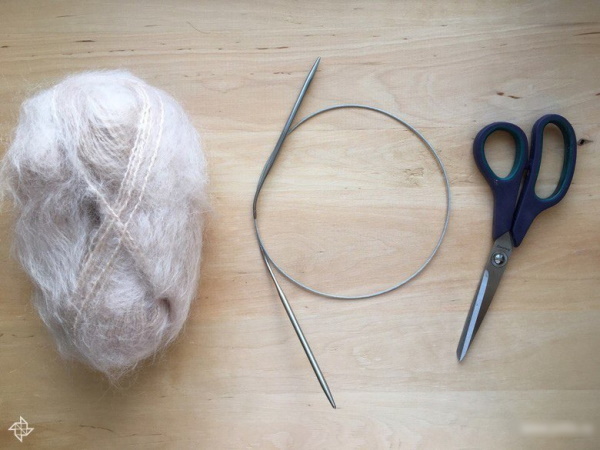
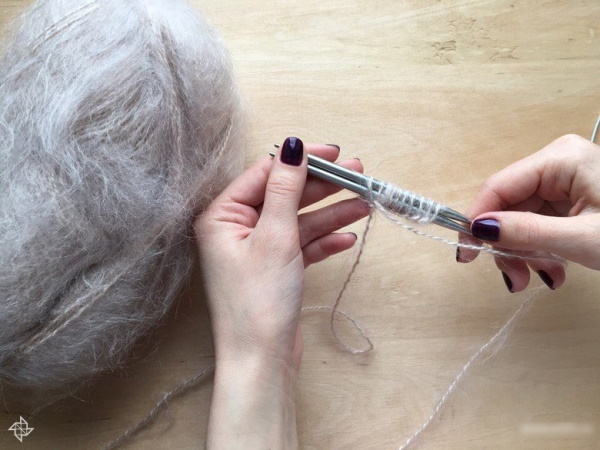
Here the set looks like this:
- Place the needles together.
- Stretch the thread between 2 fingers of the left hand (for right-handed people) and the right hand (for left-handed people).
- Place the knitting needles in your working hand.
- Pass the needle points under the stretched yarn and pull them up while simultaneously turning the hand with the yarn counterclockwise.
- Pass the needles again under the ends of the stretched thread, turn the hand with the yarn and tighten the loop. There should be 2 loops on the needles.
- Cast on the loops as described above to obtain the required number.
Once the stitches are cast on, you can begin the main work. The Italian method of casting on stitches for knitting fabric in the case of takori is considered more appropriate, as it allows you to create a more elastic and uniform edge of the hat.
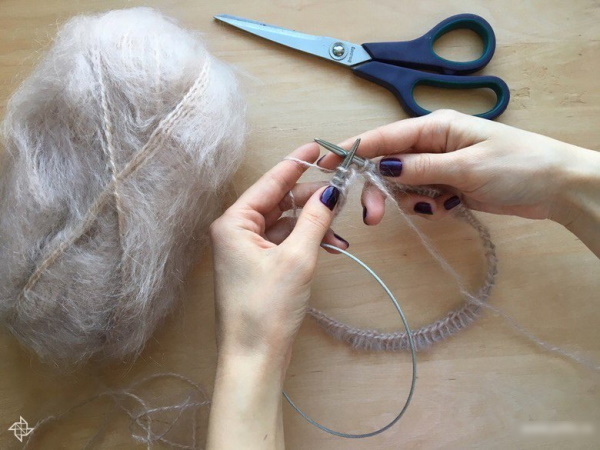
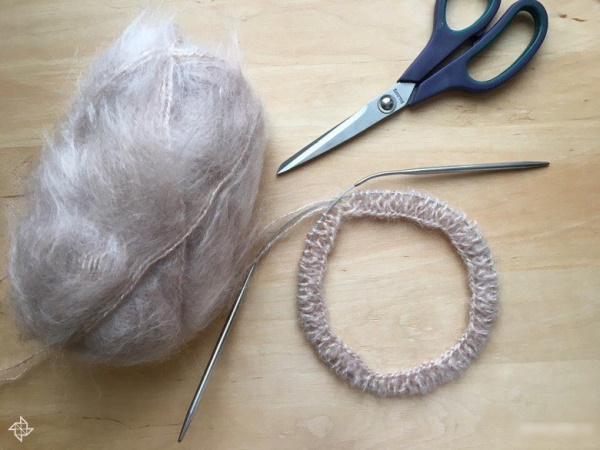
To do this you need:
- Take 1 knitting needle in your working hand.
- Place the thread in your other hand and stretch it between your fingers.
- Pass the knitting needle underneath the thread and twist your hand counterclockwise to form a loop.
- Pass the needle under the thumb, catching loop 2.
- Twist the thread so that one part of it forms loops, and the other is tightened, forming the basis for knitting, passing under the knitting needle.
The set row at the end of the process should look upside down. If so, everything went correctly.
Knitting the base of the headdress
Work on a classic stylish headdress consists of 3 parts and the creation of a base from which the sides-turn-ups will consist, the first of them. Takori is knitted both on separate "stocking" knitting needles and on circular ones. In the first case, you get a canvas that needs to be sewn, and in the second - a whole product.

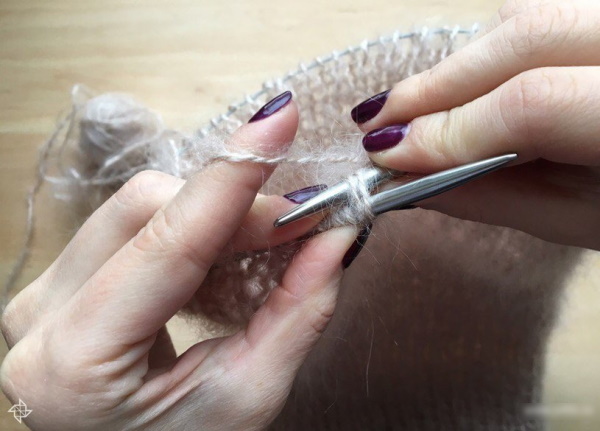

The bottom of the hat is created with English elastic, for this you need:
- Start by casting on stitches.
- Form row 1 by alternating yarn over and slip 1 stitch unknitted with knitting 2 stitches together. Repeat the work process to the end of the line.
- Complete row 2 by repeating knitting the stitch with a yarn over and 1 stitch + yarn over as a purl stitch.
- Form row 3 and the remaining odd rows in the same way as row 1.
- Work row 4 and the remaining even rows following the work pattern of row 2.
- Knit 30 cm of fabric with English elastic.
During the work, the fabric for the brim and base of the hat will be formed.
Narrowing the cap, closing the loops
The Tokari hat made of mohair at the final stage of work requires the craftswoman to have skills in reducing the number of loops and closing the fabric.

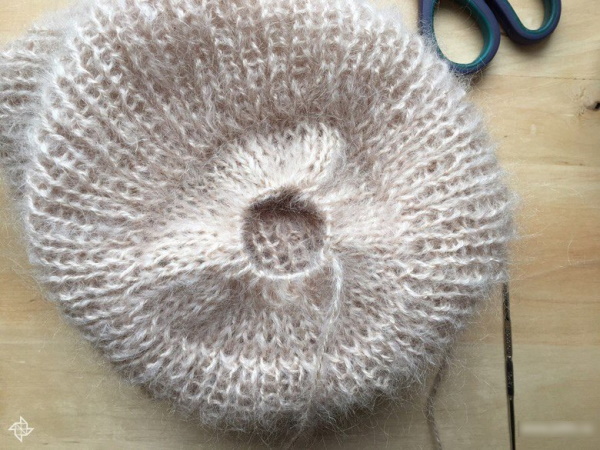
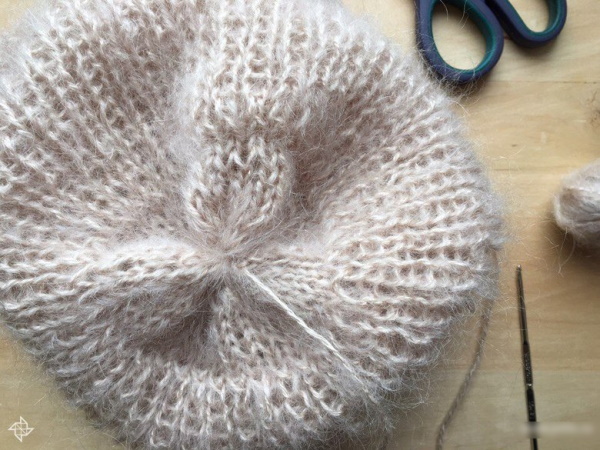
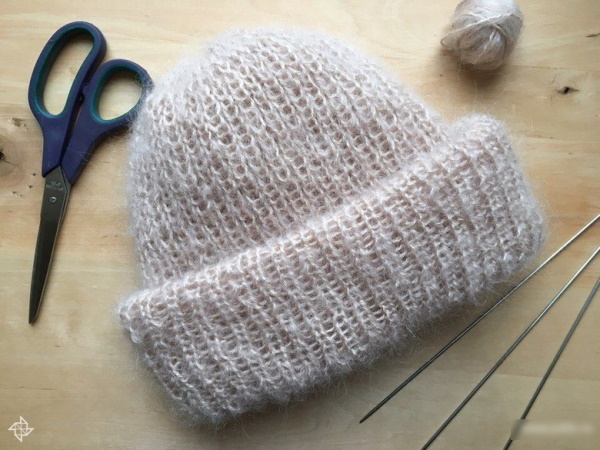
To achieve the desired effect, it is recommended:
- Mentally divide the fabric into 4 parts with an equal number of loops in them.
- For convenience, mark the boundaries of each part with plastic markers.
- Start decreasing. To do this, in the working row lying on the needles, knit together 2 loops after the edge loop. Do the same with each initial loop of the 4 parts. Combine 2 loops before the last edge loop in the already known way.
- Decrease the number of loops in every 3rd row.
- Pull the remaining stitches together when there are no more than 8 stitches left on the needles.
If the takori was knitted on double-pointed needles, sew the fabric and hide the "tail" from pulling inside the product. If the hat was made on circular needles, then simply hide the thread inside and secure it there.
Decor options
Fashionable winter headwear is complemented with various decor. For example, some needlewomen like hats with pom-poms made from fur or yarn scraps. Others prefer to place embroidery in the form of a flower, snowflake or dragonfly on the hem.
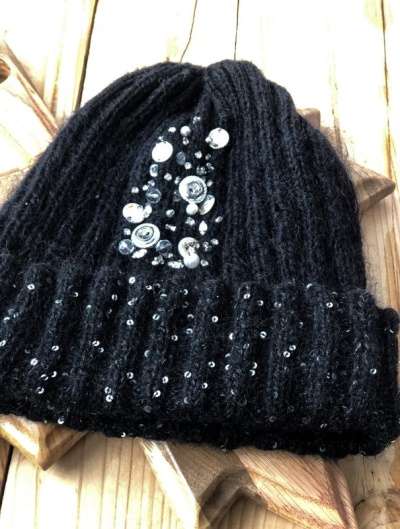 | 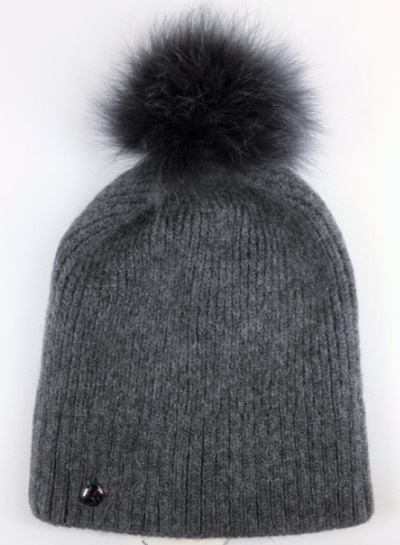 |
You can decorate the takori with rhinestones or stones. A chain attached to the side or a small brooch pinned to it looks beautiful on the product. An interesting option is to attach a large bead or bead to the front hem of the hat, between the eyebrows. This way you get a headdress in the oriental style.
The mohair hat called "Tokari" allows the needlewoman to show her imagination and add the element that she thinks is necessary to the model. The headdress is easy to knit, comfortable to wear and easy to care for. In addition, the mohair hat, if properly treated, will serve its owner for a long time.
Video about the hat
Mohair turner hat:

The Tokari hat is knitted very simply and quickly, it is very beautiful and delicate and comes out of mohair. The patterns and description will help beginners, like me once. Thanks for the article!